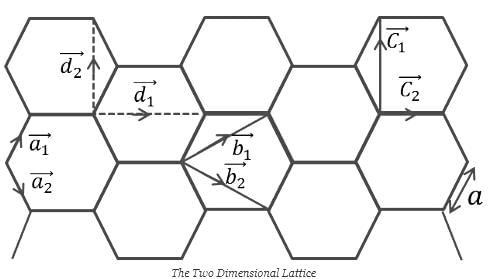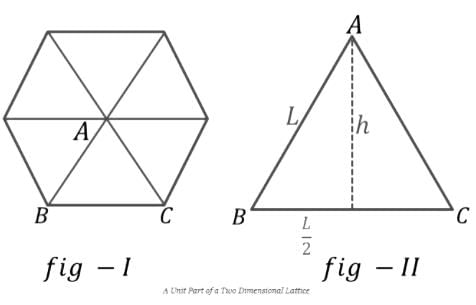CSIR NET Physical Science Mock Test - 3 - UGC NET MCQ
30 Questions MCQ Test - CSIR NET Physical Science Mock Test - 3
If A denotes '+', B denotes '×', C denotes '-', and D denotes ' ÷', then what will come in place of '?' in the following equation?
124 D 4 C 86 D 2 A 61 A 17 B 3 = ?
Figure A and B are related in a certain pattern, choose the alternative which is similarly related to the figure C.


Pointing towards a boy, Ranjita said, “He is my husband's father-in-law's only daughter's son's father's only sister's son”. How is that boy's mother related to Ranjita's husband?
Read the given statements and conclusions carefully. Assuming that the information given in the statements is true, even if it appears to be at variance with commonly known facts, decide which of the given conclusions logically follow(s) from the statements.
Statements:
Some insects are cockroaches.
Some lizards are insects.
Conclusions:
I. Some cockroaches are insects.
II. Some lizards are cockroaches.
In the following figure, the pentagon represents 'Nepali words', the circle represents 'Hindi words', the rectangle represents 'English words', and the square represents 'Persian words'.

Which number represents the words of English and Persian that are included in Hindi words?
Find the values of x and y in the given figure.

A bent can row 15 km per hour downstream and 9 km per hour upstream. The speed (in km/hour) of the boat in still water is:
In a gathering of 30 people, 20 people knew each other and 10 people didn't know each other. People who know each other hug and people who don't know each other shake hands. So how many handshakes took place in that gathering?
Arithmetic mean of 12 observations is 40. The smallest and the largest observations are 20 and 60 respectively. If we ignore the smallest and the largest observations then the arithmetic mean of the remaining observations _______.
The image (or reflection) of the point (1, 2, −1) in the plane 3x − 5y + 4z = 5 is :
The two-dimensional lattice of graphene is an arrangement of carbon atoms forming a honeycomb lattice of lattice spacing as shown below. The Carbon atoms occupy the vertices.

The Wigner – Seitz cell has an area of –
The interval [0,1] is divided into n parts of equal length to calculate the integral  sing the trapezoidal rule. The minimum value of n for which the result is exact, is
sing the trapezoidal rule. The minimum value of n for which the result is exact, is
Monochromatic light of wavelength 660nm and intensity  falls on a solar cell of area 30 cm2. The conversion efficiency of the solar cell is 10%. If each converted photon results in an electron - hole pair, what is the maximum circuit current supplied by the solar cell?
falls on a solar cell of area 30 cm2. The conversion efficiency of the solar cell is 10%. If each converted photon results in an electron - hole pair, what is the maximum circuit current supplied by the solar cell?

A double slit interference experiment uses a laser emitting light of two adjacent frequencies v1 and v2(v1<v2). The minimum path difference between the interfering beams for which the interference pattern disappears is -
Non interacting boson undergoes Bose – Einstein Condensation (BEC) when trapped in a three dimensional isotropic simple harmonic potential. For BEC to occur, the chemical potential must be equal to –
If the energy dispersion a two-dimensional electron system is E-uhk, where u is the velocity and k is the momentum, then the density of state D (E) depends on the energy as (June)
A sphere of homogeneous linear dielectric material is placed in an otherwise uniform electric field , then the electric field E0 inside the sphere :

Consider a system of eight non-interacting, identical quantum particles of spin 3/2 in a one-dimensional box of length l. The minimum excitation energy of the system, in units of 
A hydrogen atom is in the state  where n, l, m in ψnlm denote the principle orbit and magnetic quantum numbers, respectively. What is the expectation value of L2 in units of
where n, l, m in ψnlm denote the principle orbit and magnetic quantum numbers, respectively. What is the expectation value of L2 in units of  ?
?
If the energy dispersion of a two-dimensional electron system is E = uħk where u is the velocity and k is the momentum, then the density of states D(E) depends on the energy as
An atom has a non-degenerate ground-state and a doubly-degenerate excited state. The energy difference between the two states is ε. The specific heat at very low temperatures (βε >> 1) is given by
Which of the following circuits implements the Boolean function
F(A, B, C) = ∑(1, 2, 4, 6) ?
The active medium in a blue LED (light emitting diode) is a Gax In1-x N alloy. The band gaps of GaN and InN are 3.5eV and 1.5eV respectively. If the band gap of Gax In1-x N varies approximately linearly with x , the value of x required for the emission of blue light of wavelength 400nm is (take hc ≈ 1200 eV - nm)
The separation between the energy levels of a two-level atom is 2 eV . Suppose that 4 × 1020 atoms are in the ground state and 7 × 1020 atoms are pumped into the excited state just before lasing starts. How much energy will be released in a single laser pulse?
The total spin of a hydrogen atom is due to the contribution of the spins of the electron and the proton. In the high temperature limit, the ratio of the number of atoms in the spin-1 state to the number in the spin-0 state is
Consider a two-dimensional square lattice with a lattice constant a. What is the reciprocal lattice vector corresponding to the (1,1) direction in the direct lattice?
Assume that the noise spectral density at any given frequency, in a current amplifier is independent of frequency. The bandwidth of measurement is changed from 2 Hz to 30 Hz. The ratio (B/A) of the RMS noise current before (A) and after (B) the bandwidth modification?
According to the shell model the spin and parity of the two nuclei are respectively,
are respectively,
The ground state of  nucleus has spin-parity
nucleus has spin-parity  while the first excited state has
while the first excited state has  The electromagnetic radiation emitted when the nucleus makes a transition from the first excited state to ground state are
The electromagnetic radiation emitted when the nucleus makes a transition from the first excited state to ground state are





 → This image is following the logic explained above.
→ This image is following the logic explained above.





 then the value of
then the value of  is
is








 will be the mid-point of the line joining (x, y, z) and (1, 2,-1)
will be the mid-point of the line joining (x, y, z) and (1, 2,-1)



































 we get:
we get:







































